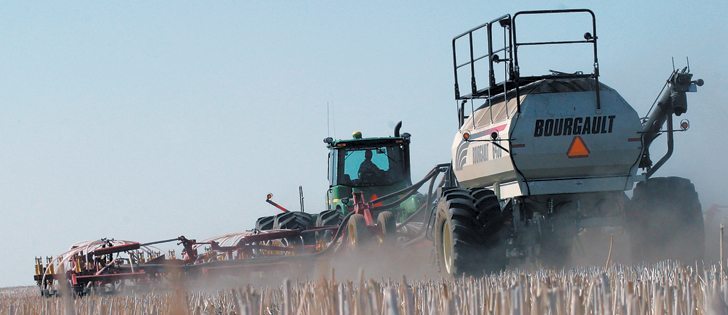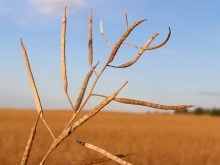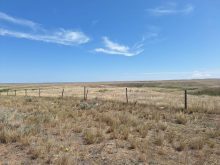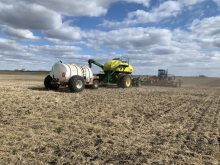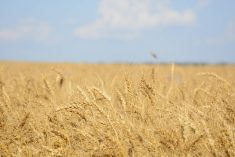Meteorologists predict normal conditions | Warm, dry spring expected for most areas
A weather forecast of normal growing conditions will probably be a relief for many prairie farmers who had to contend with a weird winter and last year’s devastatingly wet spring.
“I don’t think in general this is a real stressful looking scenario,” DTN agricultural meteorologist Bryce Anderson said during a North American spring wheat outlook session.
“The scenario we’re looking at, I think, is quite favourable as far as field work is concerned, as far as planting is concerned.”
Anderson said the odds favour a growing season of close to average heat and moisture.
Read Also

India slaps 30 per cent import duty on yellow peas
India has imposed a 30 per cent duty on yellow pea imports with a bill of lading date on or after Nov. 1, 2025.
He does not think the present dryness across most of the Prairies and northern U.S. Plains will turn into a drought, nor does he call for another period of heavy moisture like the one that saturated much of Manitoba and Saskatchewan last spring.
Wheat prices have generally been the weakest of the big North American crops because of large stocks of low and medium quality wheat.
However, Joe Victor of the Minneapolis Grain Exchange said not only does demand for high protein wheat continue to draw higher premiums since 2006, but spring wheat stocks in North America are much lower than for soft red winter, which is the class of wheat that tends to lead prices.
He said stocks of soft and red winter have grown in the past three years, but hard red spring wheat stocks have stayed flat compared to demand. Hard red spring wheat stocks are not, by themselves, onerous.
Anderson said his weather forecast is based on El Nino replacing La Nina by June, which he said has a 60 percent chance of happening.
Warm and dry conditions mean farmers across North America’s spring wheat belt could seed up to a month earlier than usual, he added.
Some areas of South Dakota and western Minnesota are already experiencing drought-like conditions.
However, Anderson thinks the Prairies will receive average to slightly above average precipitation over the growing season.
“This can cause some mid-season hiccups in how the crop progresses,” he said about the likelihood of slightly above average moisture for June.
The driest parts of the Prairies are west-central Saskatchewan and east-central Alberta, but southern Alberta and southwestern Saskatchewan are likely to get the most rain in June if the El Nino develops.
“It’s not a bad start to the season,” said Anderson.
However, first frost dates are likely to be about a week early in many areas of central Saskatchewan, with Prince Albert likely to see frost Sept. 1 and Weyburn and Moose Jaw feeling it Sept. 10.
He said it could be a good year to harvest a decent crop of wheat, with weather problems in many regions of the world reducing the size of likely crops.
In Europe, only central Germany has good moisture, while dry conditions dominate Spain and France and extend east and west across Europe.
Russia’s west is doing well, but the eastern New Lands region is dry, as is Kazakhstan.
Ukraine has three patches of drought, reducing its wheat harvest by nine million tonnes this year.


